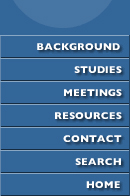 |
San Joaquin River Water Quality Data Atlas (SJR DO Data Atlas)
San Joaquin River Water Quality Data Atlas Report
Author(s):
Russ Brown
Publisher: Jones & Stokes Associates
(What follows is paragraphs 2 and 3 from the Introduction.)
The SJR Water Quality Data Atlas (Data Atlas) was created to give stakeholders, agencies, and other interested persons a rapid and consistent method to access all available data on the SJR and DWSC flow and water quality conditions for the 20-year period of 1984 to 2003. The Data Atlas includes flow and water quality data from the SJR Stevinson gage (State Route [SR] 165 Bridge, also referred to as Lander Avenue), downstream to the DWSC portion of the SJR. Tributary flow and water quality data are included for the Merced, Tuolumne, and Stanislaus Rivers, as well as Salt Slough and Mud Slough. Some basic tidal stage, salinity, and water quality data from the Delta are included for reference. Figure 1 shows a map of the lower SJR basin, with the major sampling stations included in the data atlas.
The Data Atlas uses a spreadsheet format to allow daily flow and water quality data to be graphed and evaluated. Data Atlas users can rapidly review the 20- year sequence of flow and water quality conditions in the SJR and DWSC. SJR flow and water quality patterns for a wide variety of runoff conditions (i.e., seasonal flows) can be viewed in a series of annual graphs. This allows periods with water quality conditions of interest (e.g. low dissolved oxygen [DO] episodes) to be selected for more intensive analysis or for modeling evaluation. Data Atlas users can add other graphs of special interest to the spreadsheet files. |
San Joaquin River Water Quality Modeling- A Beginning (SJR-DO TMDL Technical Work Group Presentation )
Author(s):
Russ Brown
Publisher: Jones & Stokes Associates
This is a PPT presentation to the SJR DO TMDL Technical Working Group. This abstract comes from the data atlas report introduction. - The SJR Water Quality Data Atlas (Data Atlas) was created to give stakeholders, agencies, and other interested persons a rapid and consistent method to access all available data on the SJR and DWSC flow and water quality conditions for the 20-year period of 1984 to 2003. The Data Atlas includes flow and water quality data from the SJR Stevinson gage (State Route [SR] 165 Bridge, also referred to as Lander Avenue), downstream to the DWSC portion of the SJR. Tributary flow and water quality data are included for the Merced, Tuolumne, and Stanislaus Rivers, as well as Salt Slough and Mud Slough. Some basic tidal stage, salinity, and water quality data from the Delta are included for reference. Figure 1 shows a map of the lower SJR basin, with the major sampling stations included in the data atlas.
The Data Atlas uses a spreadsheet format to allow daily flow and water quality data to be graphed and evaluated. Data Atlas users can rapidly review the 20- year sequence of flow and water quality conditions in the SJR and DWSC. SJR flow and water quality patterns for a wide variety of runoff conditions (i.e., seasonal flows) can be viewed in a series of annual graphs. This allows periods with water quality conditions of interest (e.g. low dissolved oxygen [DO] episodes) to be selected for more intensive analysis or for modeling evaluation. Data Atlas users can add other graphs of special interest to the spreadsheet files. |
Initial Simulations of 2000–2003 Flows and Water Quality in the San Joaquin River Using the DSM2-SJR Model
Author(s):
Russ Brown
Publisher: Jones & Stokes Associates
The California Department of Water Resources (DWR) created the DSM2-SJR model by modifying the DSM2 model of the Delta to represent the San Joaquin River from Stevinson to Vernalis. Tributaries are not currently part of the model, but they are represented as inflows to the San Joaquin River in the input data files. DWR originally ran the “Hydro” portion of the model to simulate flow and the “Qual” portion of the model to simulate electrical conductivity (EC) for June 1997 through September 1999. The Qual portion of the DSM2 model is capable of simulating many additional water quality constituents, but these constituents were not initially simulated by DWR. The original DWR work was described in Chapter 5 of DWR’s 2001 Annual Progress Report (Pate 2001). More recently, DWR has extended the simulation period back to January of 1990 (Wilde 2004).
The purpose of this report is to describe:
•• the hydraulic channel geometry in the model
•• the contents of two Excel spreadsheets used to manage data input and evaluate model output
•• the modifications that were made to the original files received from DWR, and
•• the initial model results for calendar years 2000 through 2003.
HydroQual staff are using the DSM2-SJR model to perform initial water quality modeling for the 2000-2003 calendar years. |
San Joaquin River Water Quality Data Atlas - CD with Data Sets and Maps
Author(s):
Russ Brown
Publisher: Jones & Stokes Associates
(This is the table of contents from the Data Atlas and describes what is in the CD. The metadata associated with this entry provides information on how to order the CD.)
Introduction.....1,
Retrieval and Display of Data ...2,
Interagency Ecological Program....4,
California Data Exchange Center ....4,
United States Geological Survey .....4.
United States Department of Interior, Bureau of Reclamation...5
California Irrigation Management Information System.....6,
Dahlgren–University of California, Davis, Algae and
Nutrient Data......6,
Bay Delta and Tributaries ....7,
San Joaquin River Water Quality Data Atlas Files ...7,
USGS 7.5-Minute Maps....7,
Multi-Year Comparison Files ....9,
Annual Master Files ....14,
Bonus Files .....15
|
| |
|
|


